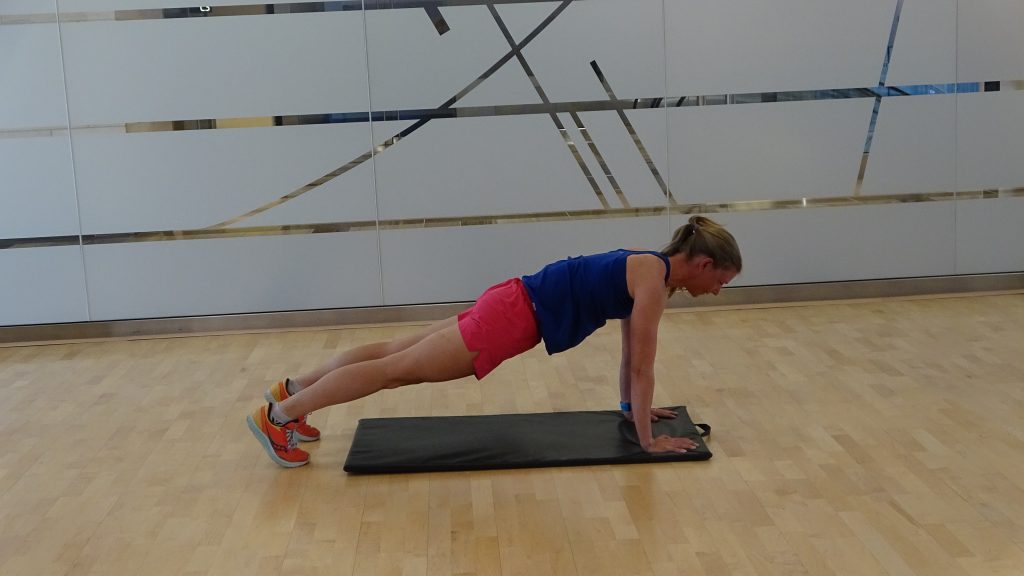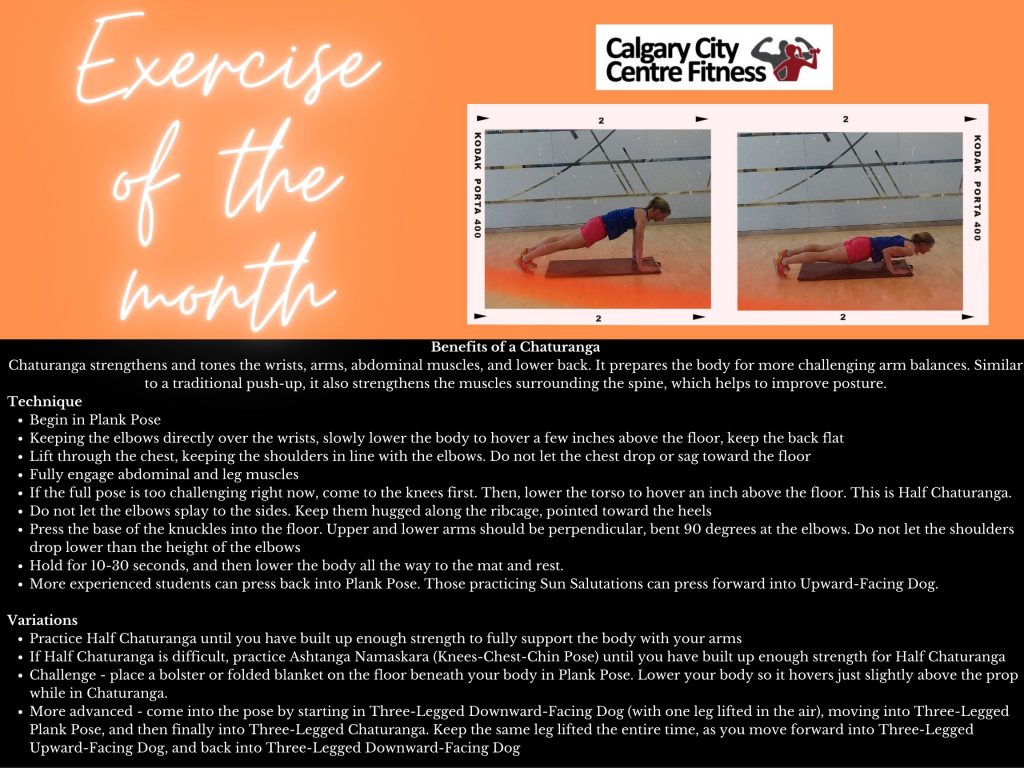Benefits of a Chaturanga
Chaturanga strengthens and tones the wrists, arms, abdominal muscles, and lower back. It prepares the body for more challenging arm balances. Similar to a traditional push-up, it also strengthens the muscles surrounding the spine, which helps to improve posture.
Technique
- Begin in Plank Pose
- Keeping the elbows directly over the wrists, slowly lower the body to hover a few inches above the floor, keep the back flat
- Lift through the chest, keeping the shoulders in line with the elbows. Do not let the chest drop or sag toward the floor
- Fully engage abdominal and leg muscles
- If the full pose is too challenging right now, come to the knees first. Then, lower the torso to hover an inch above the floor. This is Half Chaturanga.
- Do not let the elbows splay to the sides. Keep them hugged along the ribcage, pointed toward the heels
- Press the base of the knuckles into the floor. Upper and lower arms should be perpendicular, bent 90 degrees at the elbows. Do not let the shoulders drop lower than the height of the elbows
- Hold for 10-30 seconds, and then lower the body all the way to the mat and rest.
- More experienced students can press back into Plank Pose. Those practicing Sun Salutations can press forward into Upward-Facing Dog.
Variations
- Practice Half Chaturanga until you have built up enough strength to fully support the body with your arms
- If Half Chaturanga is difficult, practice Ashtanga Namaskara (Knees-Chest-Chin Pose) until you have built up enough strength for Half Chaturanga
- Challenge – place a bolster or folded blanket on the floor beneath your body in Plank Pose. Lower your body so it hovers just slightly above the prop while in Chaturanga.
- More advanced – come into the pose by starting in Three-Legged Downward-Facing Dog (with one leg lifted in the air), moving into Three-Legged Plank Pose, and then finally into Three-Legged Chaturanga. Keep the same leg lifted the entire time, as you move forward into Three-Legged Upward-Facing Dog, and back into Three-Legged Downward-Facing Dog

End 
Start 

